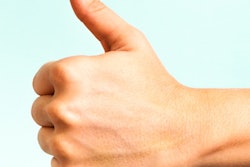Tuesday, November 29 | 1:30 p.m.-2:30 p.m. | T6-SSNR08-5 | E350
The effects of revised guidelines for the use of carotid Doppler ultrasound in diagnosing internal carotid artery stenosis will be discussed in this RSNA presentation.Traditionally, the suggested range for diagnosis of a moderate, 50 to 69% stenosis had been peak systolic velocity measurements between 125 cm/s and 229 cm/s. These recommendations were established in 2003 by the Society of Radiologists in Ultrasound. However, the Intersocietal Accreditation Commission has expressed concern in recent years that these suggested measures are too broad. As a result, the commission narrowed this range for moderate stenosis to 180 cm/s to 229 cm/s.
Researchers led by Dr. Shima Tafreshi from Northwell Health in White Plains, NY, looked at a total of 15,810 carotid arteries for 7,905 patients. They found that of the 1,311 carotid arteries previously classified as moderate, the new parameters eliminated 1,054. This meant only 257 remained "moderate."
Also, the ratio between internal carotid artery and common carotid artery (ICA/CCA) greater than two was found in 34% of patients with peak systolic velocity between 125 cm/s and 179 cm/s. Meanwhile, an ICA/CCA ratio greater than two was found in 75% of patients with velocity greater than 180 cm/s.
"This is further evidence that the prior range was too broad," authors wrote.
Find out more in this Tuesday session.




















